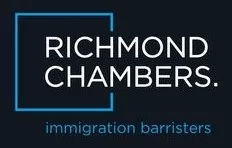- in European Union
Here at Richmond Chambers we are very lucky to be surrounded by some of the best cultural venues the UK has to offer. There's literally an opera house just down the road!
If you want to work within the UK's bustling arts and culture industry, you may be interested in the Creative Worker Visa. In this article I will discuss the basics of this immigration route as well as briefly cover some alternatives. Readers may also be interested in our previous post on this immigration route.
What Is the Creative Worker Visa and Am I Eligible?
The Creative Worker Visa is a short-term visa which allows Creative Workers to come to the UK for up to 12 months and, if they wish to continue working for the same sponsor, to extend their stay for a maximum of 24 months. While this is a great short-term option, this is not a direct route for settlement. However, it may be possible to switch into another immigration route which can lead to indefinite leave to remain.
A Creative Worker is someone who works as an entertainer, creative artist, fashion model, or entourage. There is no exhaustive list of roles which fall under this category, though the guidance helps us by confirming that Creative Workers may work within the following industries:
- Dance;
- Music;
- Film;
- Theatre;
- Television;
- Circuses;
- Opera; and
- Fashion Modelling.
Creative Workers may also bring their entourage to the UK, which includes production crew and personal assistants to directors or producers.
How to Apply for a Creative Worker Visa
Who Can Sponsor a Creative Worker?
To apply for a creative worker visa you must have a sponsor. Contrary to other sponsored work routes, including the Skilled Worker route, an applicant's sponsor need not be their direct employer. The sponsor can be:
- Your direct employer;
- A producer, co-producer, or general management company if you are employed through a Special Purpose Vehicle;
- Your venue;
- Your promoter; and
- Your agent, based in the UK.
It is important to check that your employer has a sponsor licence and understands the duties that come with being a sponsor.
How Do I Get a Creative Worker Certificate of Sponsorship?
Your sponsor will assign you a certificate of sponsorship (CoS). In order to be assigned a CoS you must fall within one of the following three categories:
- You comply with the relevant Code of Practice under Appendix Creative Workers Codes of Practice, if one exists for your occupation. For example you may be internationally famous in your field, or perhaps you worked with the production before and they require you for continuity;
- Your job is on the shortage occupation list under Appendix Shortage Occupation List; or
- Your sponsor has conducted a resident labour market in that field and is satisfied that the work could not be carried out by a settled worker.
How Do I Apply for a Creative Worker Visa?
Once you have been assigned a CoS, most applicants will need to complete the Home Office's online application form for a Creative Worker Visa.
If you are not a national or citizen of a country or territorial entity listed in Immigration Rules Appendix Visitor: Visa national list (i.e. you are an EU, EEA and Swiss citizen or other non-visa national), you have a valid Certificate of Sponsorship from an approved sponsor for the Creative Worker route and the total length of your paid engagement or engagements in the UK will be 3 months or less then you may qualify to travel to the UK without a visa and instead ask for permission to enter when you arrive at the UK border under the Temporary Work – Creative Worker visa concession.
In either case, you must "genuinely intend" and be capable of performing whatever engagement you are coming to the UK to do. You must not carry out any other employment during the period in which you are in the UK. The Immigration Rules define the terms "employment" and "work" very broadly, so be careful not to breach the conditions of your stay.
If you are applying from outside the UK, or have spent less than one year in the UK, you must show that you have enough money to maintain yourself and any dependents. Your sponsor can choose to certify your maintenance on your CoS.
In addition, your sponsor must pay you above the minimum wage, unless you are exempt, in which case they must add a sponsor note to the CoS
Can I Apply for a Creative Worker Visa From Within the UK?
Switching into the Creative Worker route from within the UK is not normally permitted.
There is a very limited exception for individuals who, before entering the UK, were assigned a valid CoS on the Creative Worker route on or before 8 November 2022 and who subsequently had permission as a Standard Visitor undertaking permitted creative activities or as a Permitted Paid Engagement Visitor.
What Alternatives Are There to the Creative Worker Visa?
There are several alternatives to the Creative Worker Visa, each with its own advantages and disadvantages.
Global Talent Visa
Advantages:
- If you successfully apply for the Global Talent visa you can choose how long you want to stay in the UK, with a maximum period of five years;
- You will not be tied to a sponsor, so you can change employers without it affecting your immigration status. You can also be self-employed;
- You do not have to fulfil any financial or English language requirements;
- This route is a path to settlement.
Disadvantages:
- This route has a higher threshold than most immigration routes. In order to be eligible you must be a world leader or a potential world leader in your field.
Permitted Paid Engagement Visa
Advantages:
- This route allows you to work in the UK and be paid;
- If you are a non-visa national you can apply at the border;
Disadvantages:
- This route only allows you to stay in the UK for up to one month;
- This is not a route to settlement.
Creative Visit Visa
Advantages:
- If you are a non-visa national you can normally seek entry as a Visitor on arrival in the UK. A non-visa national must still satisfy the requirements for entry as a Visitor and so, on arrival, should be prepared to explain, for example, the purpose of their visit and how they will be maintained and accommodated in the UK, as well as their return travel arrangements.
Disadvantages
- You may only remain in the UK for up to six months;
- You may not work in the UK. The Home Office interprets "work" and "employment" very broadly, so you need to ensure that whatever you are doing falls under permitted activities.
Skilled Worker Visa
Advantages
- You can be sponsored for up to five years initially, but there is no time limit as to how long may be spent in this route;
- Your sponsor will not have to do a resident labour market test, they simply have to show that they genuinely need a worker to fill your role and you have the requisite skills and / or experience to undertake the role;
- This is a route to settlement.
Disadvantages
- Your role must be on the list of skilled occupations approved by the Home Office. This is an exhaustive list so there is less flexibility than under the Creative Worker route;
- You will be tied to your sponsor and role, if you decide to change employers or change roles, you will need a new certificate of sponsorship;
- You will need to fulfil financial and English language requirements;
- The application for settlement is more onerous than applying for settlement from the Global Talent route.
The content of this article is intended to provide a general guide to the subject matter. Specialist advice should be sought about your specific circumstances.
[View Source]

